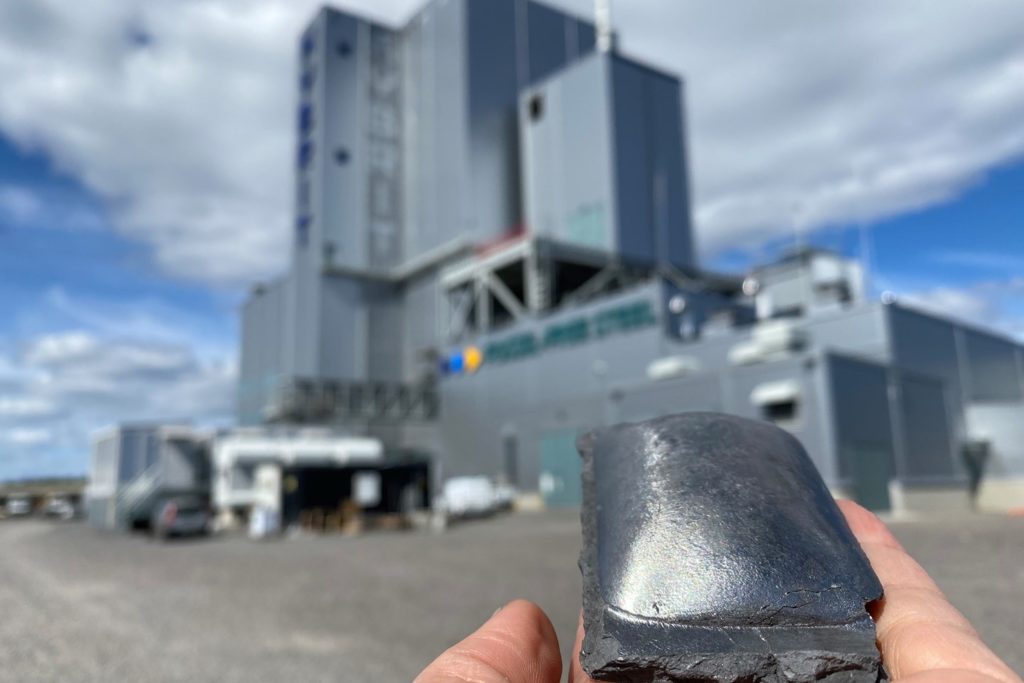LKAB says it is boosting both the pace and the level of ambition of its plans towards transitioning to carbon-dioxide-free sponge iron following a successful exploration program.
A dramatic increase in mineral resources means that the plan for future production of sponge iron has been upped to 24.4 Mt/y by 2050. This will enable a reduction in carbon dioxide emissions among global steel industry customers corresponding to nearly all of Sweden’s current greenhouse gas emissions, LKAB says.
“The climate can’t wait and demand for the raw material for producing fossil-free steel is already upon us – before we have even reached the market,” Jan Moström, LKAB’s President and CEO, said.
In March 2022, LKAB reported increased mineral reserves and mineral resources, referencing deposits containing about 4,000 Mt, which will enable production far beyond 2060. LKAB’s known mineral reserves and resources now add up to double the amount thus far mined in the company’s 130-year history.
“We are accelerating and expanding the plans for future production of sponge iron produced with hydrogen,” Moström said.
LKAB is now moving towards a rapid industrialisation of the HYBRIT technology for transforming production in Malmberget/Gällivare, which is closely integrated with SSAB. The plan is to synchronise the transition with SSAB’s planned transition and to have switched entirely from pellet production to sponge iron amounting to some 5.4 Mt by the 2030s. This will enable emissions reductions amounting to about 9 Mt at SSAB.
Moström added: “After the most recent climate reports from the UN, the urgency of the climate issue must be obvious to everyone. We can see that this transition also makes good business sense and that it creates jobs, growth and yield on investments. By leading the way towards the green transition, we are also building Sweden’s competitive advantage internationally.
“The entire value chain must undergo a transformation, and quickly. The HYBRIT technology, which we have developed in collaboration with SSAB and Vattenfall, will be industrialised starting in Gällivare, where the first plant will be operational in 2026. The capacity increase LKAB is now planning corresponds to three more such facilities in Malmberget/Gällivare within barely a few years after commissioning of the first HYBRIT plant.”
When the transition has been completed, with increased production, by around 2050, the target is for LKAB to produce 24.4 Mt/y of sponge iron, with zero carbon dioxide emissions. By removing the oxygen from the iron ore by means of electrically-produced hydrogen gas, instead of the steel mills using fossil carbon in blast furnaces, LKAB can enable reductions in carbon dioxide emissions of between 40-50 Mt/y at steelmaking customers. That corresponds to nearly all of Sweden’s current annual greenhouse gas emissions.
A rapid transition places higher demands on fossil-free electricity and more power distribution infrastructure. LKAB’s demand, needed mainly for hydrogen gas production, is estimated at 20 TWh/y by 2030, increasing to 50 TWh/y by 2040 and finally reaching 70 TWh/y when the entire expansion has been realised by 2050.
“To make the climate transition a reality, we will need a massive expansion of power production and distribution,” Moström said. “We need to double electricity production within the next 25 years, and the iron and steel industry value chain is waiting for very other TWh of this.”
The switch from pellets to sponge iron also means that the value of the product increases significantly, according to LKAB.
Moström concluded: “In terms of today’s market prices, this expansion would triple LKAB’s revenue. By building up production of sponge iron, we are increasing the value of LKAB’s, and thereby Sweden’s, mineral reserves and resources, and creating growing export values. Above all, we are making an enormous effort for the benefit of the climate.”











